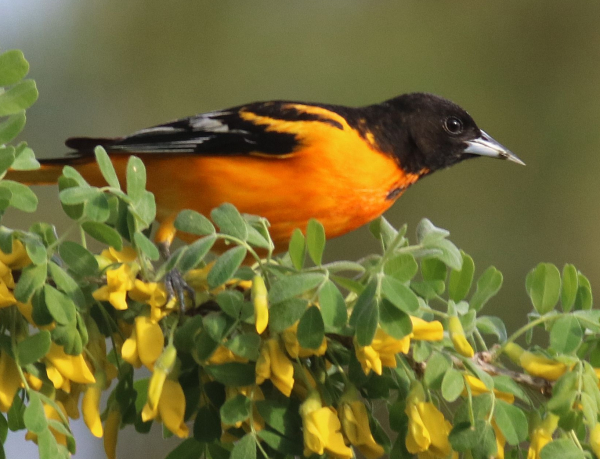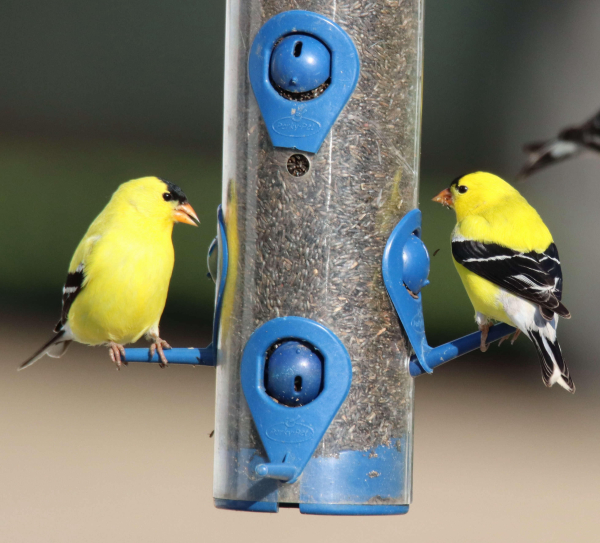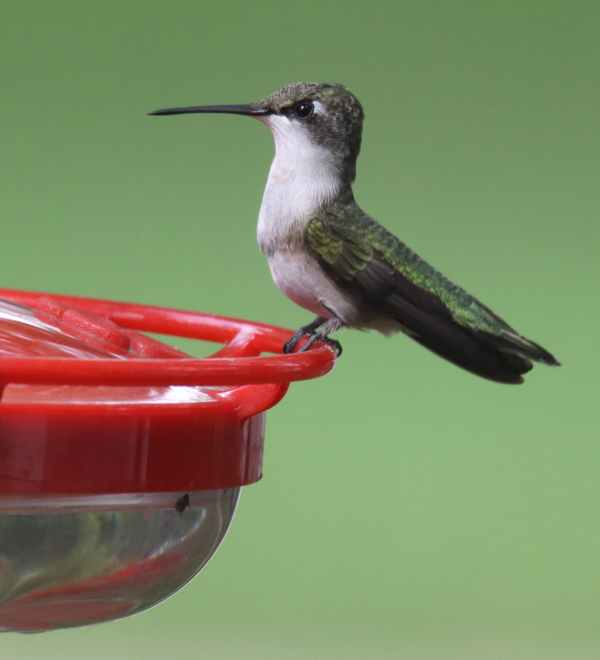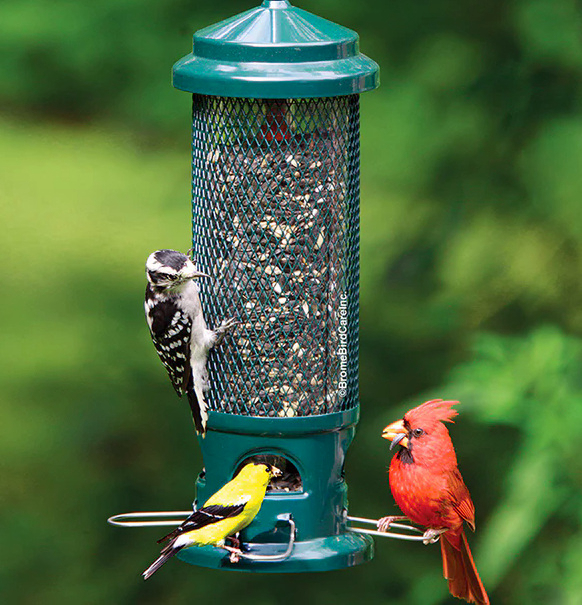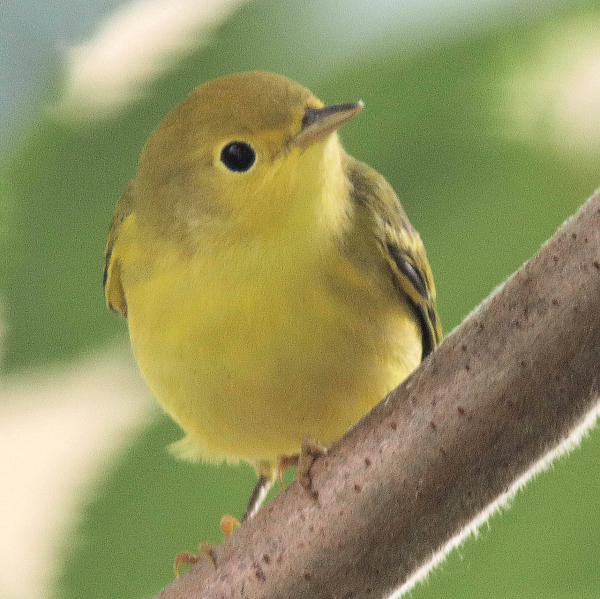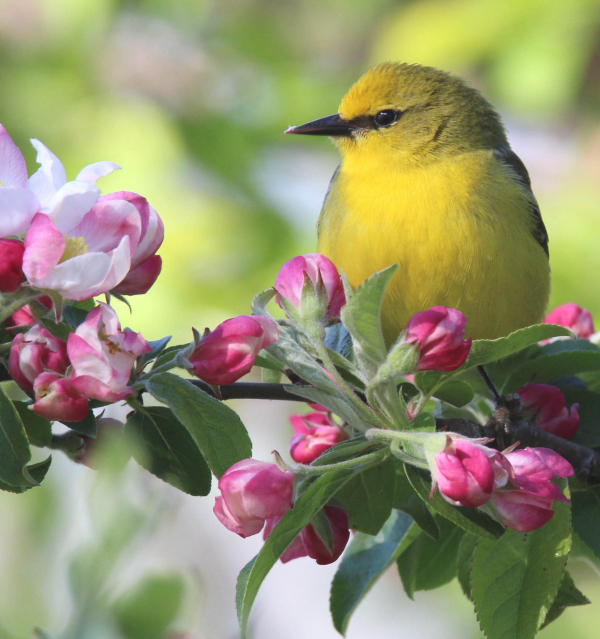Grape Jelly is the King of Spring
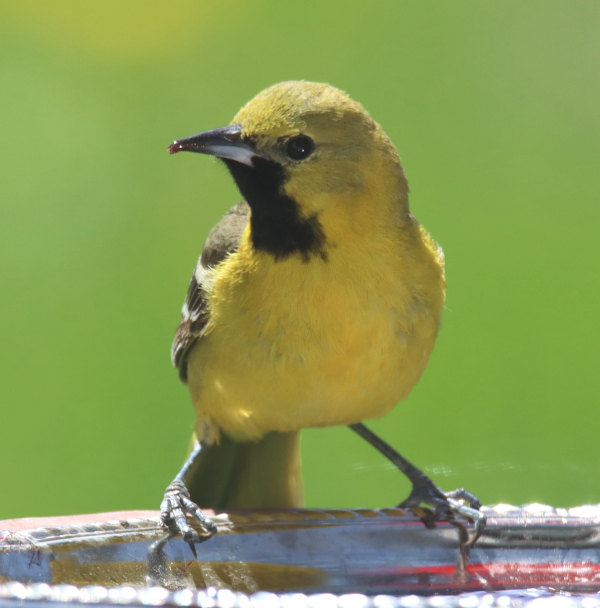
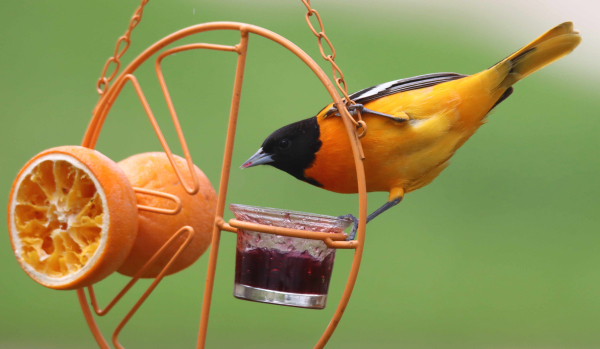
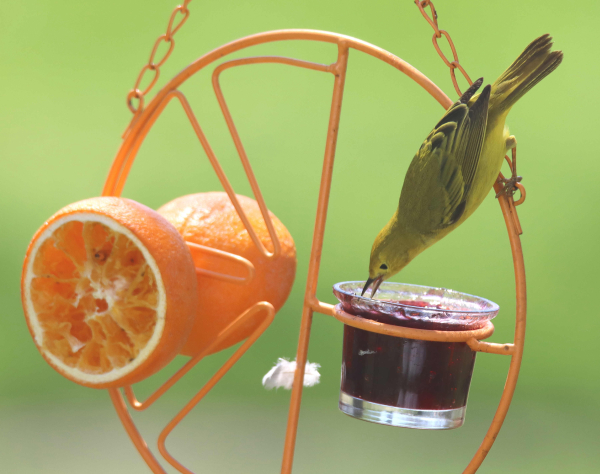
We have long promoted adding grape jelly to your feeding station, this year and other years. We knew grape jelly is the primary gourmet interest of orioles, but last week we realized that grape jelly was driving all the birds to our feeding station – Baltimore Orioles, Orchard Orioles, Yellow Warblers, House Finches, Gray Catbirds, American Robins, and yes, even Ruby-throated Hummingbirds check out the jelly offerings for small flying insects before or after they stop at the nectar feeder. These are really exciting birds to observe and to attract to your yard this spring, and maybe through the summer.
While species composition at a jelly feeder might be different in your yard, depending on where you live, it’s definitely worthwhile to make grape jelly a priority at your feeding station at least from May to October, especially when it attracts some of the most colorful birds that sing some of the most beautiful songs for your yard and neighborhood. Sunday, Paul finally gave in and added a second jelly feeding venue adjacent his primary oriole feeder. He had 4 species waiting in line to feed at the one little bowl that usually satisfies feeder visitors for a day; but Saturday he had to refill the feeder every 4 hours, so a small decorative silver tray with more grape jelly was added to the feeding station, and Sunday morning another oriole feeder was added to the venue.
Paul wrote: “I really appreciate the new migrant species that have found my feeding station, and while other foods and fresh water is available, they go mostly unnoticed. Even the orange halves, which have always been touted as The food for orioles, go largely untouched. We think oranges are important to get orioles’ attention, but if there is grape jelly available, that’s what they prefer 99 percent of the time, and it’s what keeps them coming back. It’s interesting to note that orioles and other birds usually check for insects, including ants, that make their way to the jelly offerings, so don’t become distressed if the jelly attracts a few bugs – the birds will utilize them for protein.”
Oriole Colors
Just among the orioles at my feeders there is a great variety of plumages and colors among individuals attracted by the grape jelly. I can never get enough of the bright orange color of adult male Baltimore Orioles that seems to glow at times. At least one male is paler in color, really more yellow rather than orange, which adds a nice twist. Female Baltimores are even more variable, with some showing brown accents while others have more brown-black mixed with their orange and yellow coloration. Young males resemble females in many ways but tend to show more black feathering, and young females show little or no brown or black accenting colors, showing shades of orange.
Then there are the Orchard Orioles, which are smaller than Baltimores and Bullock’s Orioles, almost half the size; but the males’ black areas of color are similar although rather than orange they sport an especially rich chestnut color. By contrast, females show bright yellow undersides and yellow-olive colored backsides; they are very beautiful in their own right. And then there are the unique yearling male Orchard Orioles that are mostly olive colored with a black facial mask that makes them especially distinctive. In addition to their vibrant and varied colors, Baltimore and Orchard Orioles provide some of the most beautiful bird songs in all of North America.
Homesteading Orioles
We are convinced that by providing a constant supply of grape jelly, some orioles are attracted to establish a nesting territory, building a nest in nearby trees, raising their nestlings during June and July, and even bringing their fledglings to feed on jelly after leaving the nest. This is also probably true for some other species in our area, including Gray Catbirds. Of course, a prime oriole nesting location also requires appropriate habitat in the form of maturing trees and thickets of bushes, but that’s available as a result of our landscaping efforts in our yard.
Landscaping is important for orioles too, because they can’t live by grape jelly alone, and trees, bushes, and other plants also provide an abundance of small insects and caterpillars for essential protein for the adults and developing nestlings and fledglings. This shows how feeding birds and providing habitat go hand in hand in benefiting migrating and nesting birds. The birds we attract and benefit with welcoming feeding stations and birdscaped yards are not really “our birds.” They also populate other areas that may stretch north to the boreal forest region or even farther north to the Arctic tundra; while many neotropic songbirds spend winters in areas of Latin America. We can all give ourselves a lot of credit for the many things we do to benefit birds throughout the year, especially during spring and summer; while the birds add so much to people’s lives when they visit.
In our yard, starting in May it all begins with grape jelly, and never before have we attracted such a variety of colorful birds. We can’t wait to see what the next new species will be that tries the purple pudding. We strongly recommend that if you aren’t providing grape jelly yet, add some to your feeding station today. Seriously, run to the nearest store and buy a squirt bottle of grape jelly and see how long it takes for interesting birds to appear. It took no more than 40 minutes for the first Baltimore Oriole to find the grape jelly when we added it to the menu 2 weeks ago. Then keep the jelly coming, and you will find the birds that grape jelly attracts will add appreciably to your remaining spring and summer backyard birding fun.
Share your backyard birding experiences and photos at editorstbw2@gmail.com

